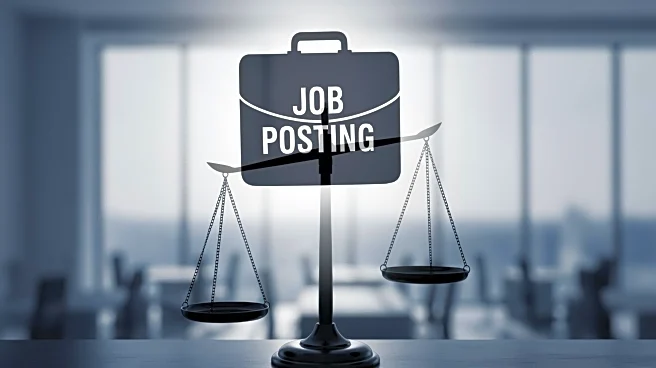What's Happening?
The U.S. job market is experiencing significant strain as job cuts surge to the highest level since 2003. In October 2025, U.S. employers announced 153,074 job cuts, marking a 183% increase from September.
The technology and warehousing sectors are leading these reductions, driven by the rapid adoption of artificial intelligence and automation. Year-to-date job cuts have reached 1,099,500, up 65% from the previous year. Hiring plans have also fallen by 35% year-over-year, with only 488,077 new hires announced, the lowest since 2011. The cooling labor market is attributed to pandemic-era hiring corrections, softening consumer and corporate spending, and rising operational costs.
Why It's Important?
The surge in job cuts reflects broader economic challenges, including the impact of AI and automation on traditional industries. As companies streamline operations, workers face increased difficulty in securing new roles, contributing to rising unemployment rates. The decline in hiring plans signals caution among employers amid economic uncertainties, potentially affecting consumer spending and overall economic growth. The situation highlights the need for policies that support workforce transitions and address the implications of technological advancements on employment.
Beyond the Headlines
The integration of AI and automation is reshaping industries, prompting discussions on the future of work and the need for reskilling programs. The job market's transition may lead to long-term shifts in employment patterns, with potential impacts on income inequality and social stability. As sectors like technology and warehousing undergo restructuring, the focus on efficiency and cost reduction may drive further changes in labor dynamics.











